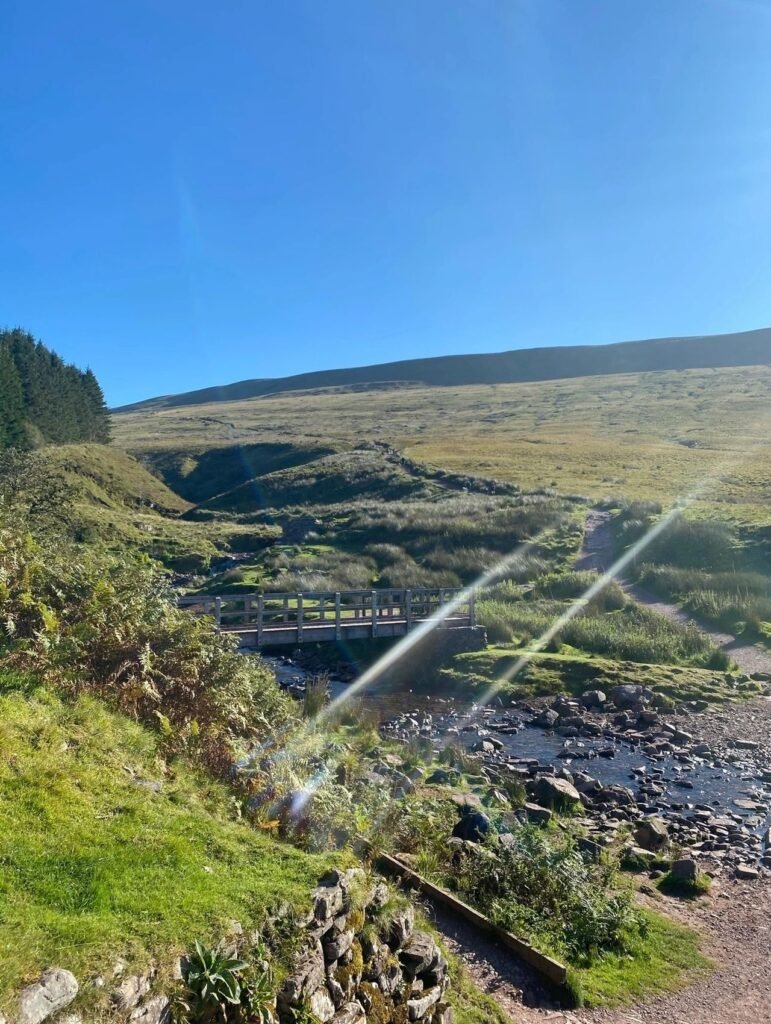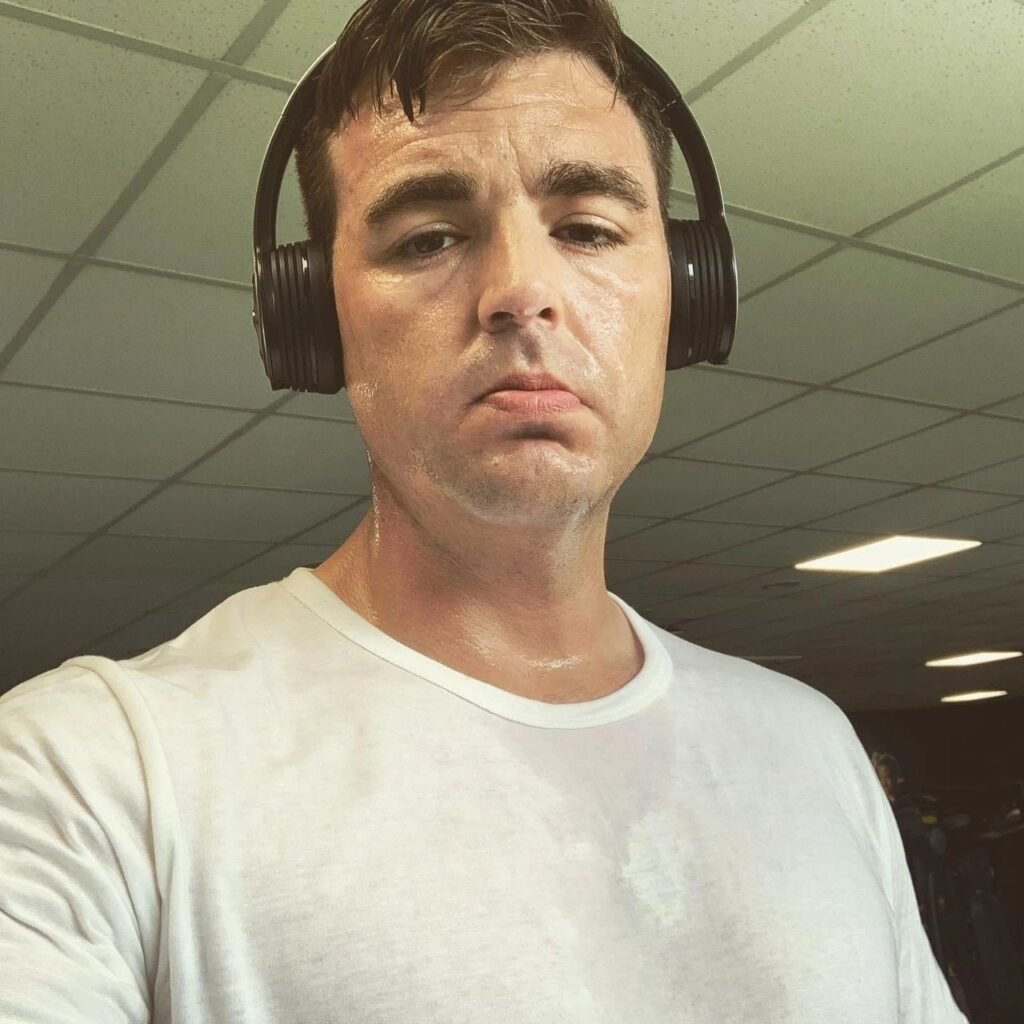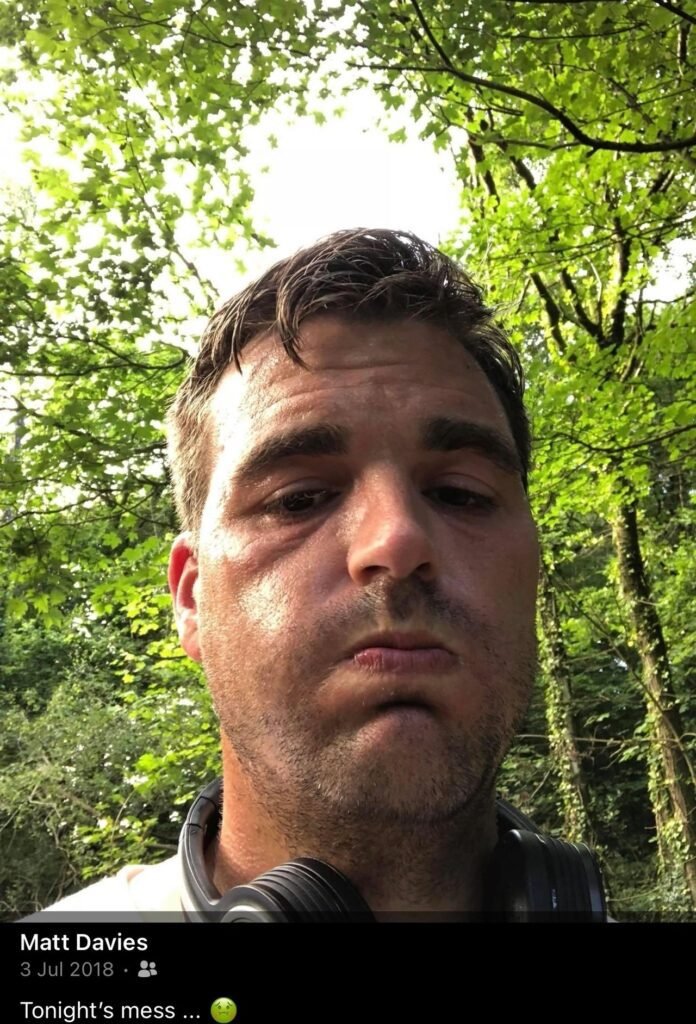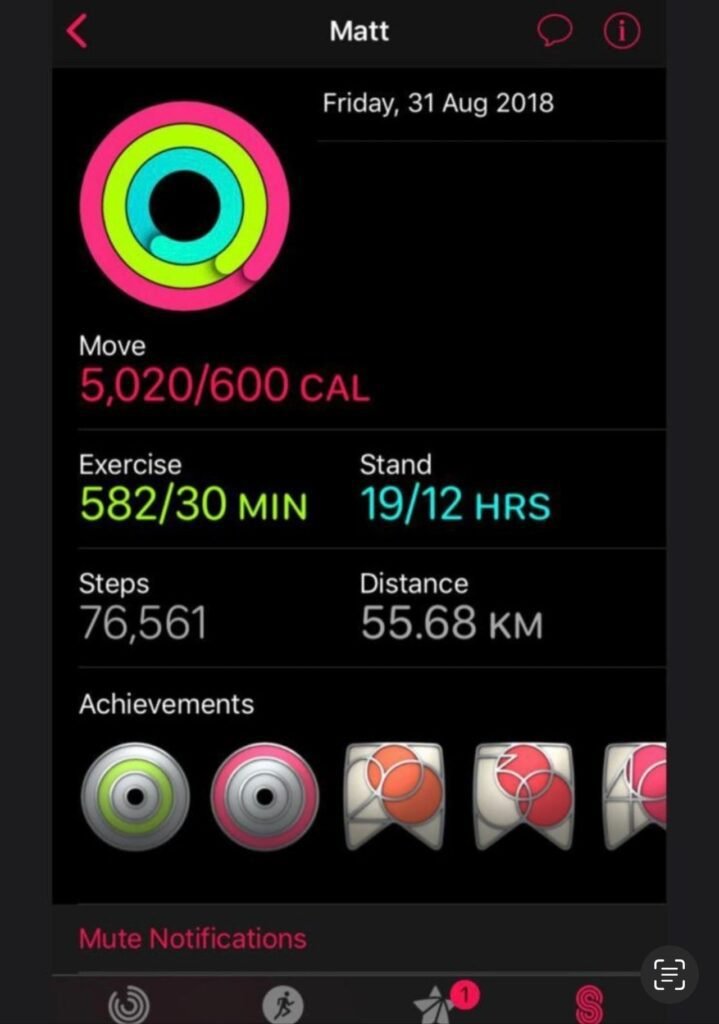Is this the ultimate endurance hike? No, but the 10 Y Fan is a great and tough personal achievement I’m proud of.
Part 1 consisted of general hiking information and my attempt to justify its worthy inclusion into your fitness programme.
As promised, Part 2 will walk you through my 2018 successful solo 10 Y Fan 40-mile ultimate endurance hike challenge: higher than Everest, and touch upon the 11 Y Fan attempt last year.
The primary reason for writing this post is to convince you that regardless of how busy life is and whatever your circumstances, with a little adaptation, you can accomplish great things.
Building endurance and strength for ultra hiking certainly required an amendment to my current training routine. With a busy home and work life, innovation was necessary. My current 3x HIIT cardio workouts weren’t going to cut it scaling higher than Everest.
This blog is ultimately about you and your goals. If sharing my endurance Hike experience successfully achieves this—great! I’m always on hand via the contact me button if I can ever help with any long-distance hiking questions, or anything at all.
Why I chose The 10 Y Fan Endurance Hike
Within a previous post, I stated I’d taken a few DNA tests. one such test consisted of some genetic fitness analysis. It transpires that I have very good genes suited towards endurance and poor muscle building potential.

Having spent the best part of 20 years primarily strength training, the DNA results set my curiosity racing, and I pondered whether I was leaving wasted potential on the table.
At that point in my life, I’d also become involved with a terminally ill children’s charity. The stars aligned, and the decision was made to simultaneously combine testing my endurance and raising money for this amazing charity.
I’ve historically performed as an above-average runner and initially managed to grab a slot within the London Marathon. Upon further reflection, my love for long-distance hiking won out, and I desired a tough ultra hike challenge to focus on.
What is the 10 Y Fan?
Pen Y Fan is a mountain located within the Brecon Beacons area of South Wales. It’s the highest British peak south of Cadair Idris mountain, which lies within Snowdonia (I’ve climbed that too).
Its height is 886 metres (2907 feet). I conveniently reside around 25 minutes by car and have previously scaled it multiple times, from all directions.
The combination of locality and familiarity helped to make up my mind. During my research, I stumbled across a planned event called the 10 Y Fan. The challenge consisted of the following:
- A group aim to climb and descend Pen Y Fan 10 times within a 24-hour cut-off period.
- The total accumulated height is 8860 metres (29070 feet). Mount Everest’s height is 8848 metres (29029 feet), and you’re legitimately climbing higher than Everest, via total accumulated height at least.
- On the chosen route, the return trip distance from bottom to peak is 4 miles.
- The total distance travelled is 40 miles, and it certainly fits the ultra endurance hike bill.
So, ten times up and down Pen y Fan within 24 hours. The scaled altitude is higher than Everest and the total distance travelled only exceeds a marathon by 14 miles? Challenge accepted. I quietly committed to beating the ultra Hike within 20 hours and making it a mostly solo event. Although, I would have been equally elated with an under 24 hour completion time.
For further insight into the 10 y Fan, the official site can be found here. In addition, here’s the link to an interesting post from an avid Hiker, articulating the brutality of the event following a failed attempt.

Picking The Endurance Hike Date
I’d firmly decided on the 10 y Fan during mid-May 2018. I was in reasonable shape from regular strength training, HIIT workouts, and weekend hikes/runs, but I had a significant gap to close in getting to this type of long-distance hiking fitness, particularly to hit the 20-hour time.
Inevitably, some climbs would be undertaken during the night time. Maximising daylight hours and favourable weather conditions were critical. June/July would have hit the criteria nicely, but I needed time to train, gather sponsorship, and work around pre-set family and work commitments.
I eventually committed to Friday, August 31st, and commenced a 12-week intense training block on June 1st.
The 10 y Fan Endurance Hike fitness requirements
You have learned from Part 1 that hiking holds a gentle, entry-level status and is accessible for everyone. This doesn’t quite hold true for a higher-than-Everest 40-mile endurance hike. I researched general ultimate hiking challenge prep articles and specifically hunted down and quizzed those who had completed this specific challenge.
My fitness requirements for event day were as follows, and I will cover each element in detail later on:
- A good general base of strength training for hiking
- A high level of cardiovascular endurance/VO2 max to climb at speed and minimise fatigue
- A conditioned body with more than half of the ultra hike mileage covered
- An optimal weight/body fat level
My general conditioning prior to June 1st
Summarising my overall fitness condition, I would stipulate “a decent level of overall conditioning and a strong starting base.”
Regardless of life being flat out, I managed to fit in 3 strength training workouts a week and a minimum of 3 x 25-minute brutal HIIT sessions. These would generally be performed on an elliptical machine following a weights workout or something similar to my home cardio workout sessions. I also managed to inconsistently get outdoors for a weekend hike or run, which was mostly no greater than 6 miles. Reaching those ultra hike fitness requirements would require a tough 3 months of prep work.
Strength training for hiking
Endurance needed to be prioritised while maintaining my strength gains over the years. A high degree of strength would greatly assist this challenge, but modifications were required:
- After digesting my previous articles, you’ll be aware I enjoy a 3-session ABA strength training split throughout the week. I reduced my strength training to twice-a-week full-body routines and extended my volume. This allowed me to replace a strength session with an endurance day.
- I’m a fan of lifting heavy with good form, mostly within the 6-10 rep range. I wanted to minimise my risk of injury and gain more muscular endurance, so I modified my strength training for the endurance hike and increased the reps to mostly the 15-20 range.
My strength training routine would generally look as below (all 3 sets 15-20 reps and 1-minute rest between sets/2 minutes between exercises unless otherwise stipulated). I also placed a major focus on prioritising legs for obvious reasons and abs for core stability:
- Squats/deep trap bar deadlift (rotate)
- Pull-ups
- Incline dumbbell bench press
- Dumbbell row
- Parallel bar dips
- Bicep curls
- Shoulder press
- Dumbbell lunges (last set of 100 reps added via a drop set)
- Hamstring curls (another 100-rep drop set for set 4)
- Leg press (you guessed it, another 100-rep drop set)
- Giant ab circuit of 3 x 30 reps (hanging leg raises, ab wheel rollouts, and cable woodchoppers)
- 20 minutes of the steepest 15% gradient treadmill walk/sprint for mental toughness/VO2 max. The goal was to increase distance each session. I can’t put into words how torturous this was—it still gives me nightmares.

I performed this strength training exercise a week prior to commencing my official training block. Experience has taught me that I’d be considerably sore for a few days following the new workout stimulus. I wasn’t wrong. The DOMS (delayed onset muscle soreness) was excruciating, and I needed assistance walking down the stairs for a few days, I jest you not!
Building endurance for hiking with family/work commitments
Back in 2018, my son was 5 and my daughter a mere 9 months. I would frequently leave the house at 6:30 am and return home by 6:30 pm Monday to Friday, with no working-from-home options. My wife also worked a busy job with similar hours to mine. My daughter was a terrible sleeper, and broken nights were the norm.
Training for this event would be problematic, particularly the weekend long-distance hiking sessions, where building miles on feet was paramount. I’ve never really found staying motivated to workout an issue, but I must confess, there were days when the below would become rather tedious.
A high level of cardiovascular endurance/VO2 max to climb at speed and minimise fatigue
Naturally, the 20-minute incline-weighted treadmill walk would far from cut it as the sole cardio prep.
I’m fortunate enough to live in an area where the countryside is plentiful. I knew an appropriate 6-mile steep gradient route, and it was located on my doorstep.
This moderate-distance 6-miler was a perfect addition to build a high level of conditioning, ensuring the event day inclines would be traversed at pace without breathlessness issues.
I ran it twice a week and focused on improving my times with each session. My first run was completed in well over 1:20. Within the week prior to the event, I was completing it within 50 minutes. Not a bad effort considering the gradient challenge.
I performed this run on non-gym days, and it slotted into my day where appropriate. I mostly favoured very early mornings and liked to get it done prior to the day’s challenges unfolding.
“Cardiovascular endurance, often measured by VO2 max, is crucial for long-distance activities like ultra hikes. Research shows that individuals with a higher VO2 max can perform at higher intensities for longer durations, delaying the onset of fatigue.”
Source: Journal of Sports Sciences

A conditioned body with more than half of the 10 y Fan race event mileage covered
This was the bread-and-butter training session, and it would greatly contribute towards building endurance for the 10 Y Fan. It was also the most time-consuming session. There’s no sense in being well-conditioned to complete the first 4 climbs (16 miles) with little aerobic fatigue, only to find your body is falling apart.
Building endurance for hiking, particularly an endurance hike, goes beyond the heart and lungs and certainly requires a hybrid fitness approach. If the body isn’t used to mileage on its feet within similar terrain, there’s the potential for hips locking up, unconditioned tendons packing in, and feet durability problems. The list is endless.
Weekends Are precious
Weekends are precious to me. In addition to navigating kids’ sports and visiting wider family, summer was here, and days out were on the cards. You only get a few good summers with your children, and I wasn’t prepared to sacrifice an unrealistic amount of time on a personal endeavour. There was also the small matter of ensuring my wife didn’t feel like a sole young family parent.
There was only one viable solution—my children would become an integral part of my training, and I’d get this building endurance for hiking session done early on Saturday mornings (7 am start and finish early pm during later sessions).
Waking up early wasn’t an issue; it’s what young children excel at, and I was more than acquainted with it. Special consideration was given to my daughter. Being 9 months old inevitably meant she was more time-demanding than my fairly self-sufficient 5-year-old son.
My goal was to start with a 10-mile Saturday session in week 1, gradually push the distance up every week, and conclude my training block with a 25-miler under my belt.
Unless the weather was particularly bad (luckily, we had a lovely summer that year), I rarely ventured out on my own. My long training walks were completed with a combination of the following (safe routes a given, of course):
Reflecting years later, this weekly training session consisted of very tough miles against resistance (a buggy or my son on my shoulders) and certainly assisted greatly in building my ultra hike prep. As a family, we’ve all fallen in love with hiking as a nice added bonus!
My Less Than One year Old Daughter Became My 10 y Fan Endurance Hike Training Buddy
Hilly routes with my daughter sat in her buggy (stroller for my American friends). Luckily, my daughter loved to be taken to scenic places. Provided I was armed with nappies (diapers), wet wipes, a change of clothes, and snacks, she was content. Pushing her around for many miles and inclines did wonders for building endurance for hiking the 10 Y Fan.
My son would also attend some training walks with me. Halfway through the training block, I completed a milestone 16-mile Pen Y Fan session. He remained on my shoulders for the duration, excluding mandatory breaks. The inclines are steep, but the terrain is safe. Again, lugging a 5-year-old on my shoulders for training walks paid enormous dividends.
My last training session was a 25-mile mostly fast incline walk with my daughter. That buggy sure went through some mileage.
“Progressively increasing mileage is essential to prevent overuse injuries in endurance sports. Studies show that rapidly increasing distance or intensity without proper adaptation can lead to injuries such as runner’s knee, plantar fasciitis, or IT band syndrome.”
Source: British Journal of Sports Medicine

My 10 y Fan Endurance Hike training Prep simplified
- Monday – strength training for hiking/incline treadmill
- Tuesday – 6-mile hilly speed run – building endurance for hiking
- Wednesday – rest
- Thursday – Monday repeat
- Friday – Tuesday repeat
- Saturday – Long-distance hike – building endurance for hiking
- Sunday – active recovery walk with the family
if I was super pressed for time, I’d from time to time ensure I was still doing something. there’s always time for a 4 minute tabata workout.
An optimal weight/body fat level
I needed to shed around half a stone and 3% body fat to get me to around 12 stone 3lbs (77kg) and 12% body fat. I wanted to be lighter for this ultra hike and minimise any pressure on the joints and tendons, as a result of lugging me around for 40 miles.
Increased activity certainly burns more calories, but the body has a natural tendency to overeat and overcompensate (a critical mistake I’ve written about several times), so I tracked everything, with the understanding that there is no best fat burning exercise… it’s all diet.
I lost the fat within around a month and utilised most of my own fat loss guide tips. I didn’t want to be playing around with a calorie deficit whilst getting deeper into more intense weeks and needed them to recover. The sooner I could maintain, the better.
It subsequently became a simple case of maintaining the new weight. I weighed weekly, and towards the end of the training block, I was consuming around 3200 calories a day and maintaining my new weight.
“Research shows that endurance athletes tend to overeat during high-intensity training phases if they don’t track their calorie intake. By maintaining a caloric balance, athletes can avoid weight fluctuations and optimise performance during long-distance events.”
Source: International Journal of Sport Nutrition and Exercise Metabolism
The 10 Y Fan Endurance Hike day
You’ll notice within my training plan, I dedicated 2 days to rest and recuperation. I remained sensible and didn’t suddenly jump my mileage up for the Saturday long-distance hikes. I remained injury-free and fresh for event day.
I’d long since decided to start the event at 7 am. I figured I’d not start too early and reap the rewards of a good night’s sleep.Completing as many early climbs as possible also acted as a good incentive to minimise the following morning’s pitch-black climbs.
I departed the house at 7 am armed with the Part 1 recommended items and set off on my 10 y Fan Endurance hike at 7:30 sharp. The sky remained blue all day, and the temperature was a perfect 20 degrees.
I always intended to complete the first 4 solo climbs (16 miles) quickly. This would enable me to set a fast pace for a large chunk of climbs before being joined for a few and being grateful for the slower pace.
As planned, I completed the first 4 climbs within 4:45 hours and took a scheduled one-hour rest. Being totally fasted, I loaded up on food from a burger van and ice cream for dessert. I’d be a little more strategic with my choices these days, but they did the job.

As the day progressed and the challenge inevitably became harder, I was joined by various friends and family for a climb or two.
Smooth sailing up until climb 7
It was during the end of the 6th climb (around 24 miles in) that my old runner’s knee injury decided to join me on the ultra hike.
Around 7 pm, after struggling through climb 7, I was physically and mentally exhausted. The basic act of walking caused excruciating pain in my knee, and my hips were starting to seize up. 12 miles remained.
I’d run out of food and sent out an SOS emergency to my wife. After managing to drop the kids off at my in-laws, she furnished me with 2 packets of Jelly Babies, which I practically inhaled (being generally low carb, I certainly wasn’t used to this).
In true-to-form behaviour, despite my concerned wife’s protest speech (quit, 7 climbs is enough), I kissed her goodbye and commenced the 8th climb. It was dark, the head torch was on, and the wind was picking up. Rapidly digesting Jelly Babies and I were the only idiots daft enough to still be on this God-forsaken rock, and one of us didn’t get a choice.

Cracking My Phone On Climb 8
I beautifully cracked my phone screen at the climb 8 peak. Although I was charging my Apple Watch where I could, my verification plan B was to ensure that I’d get time-stamped photos taken whilst holding my fingers up to indicate the climbs completed.
The issue I encountered was that no one else was at the peak at climb 8. After numerous failed attempts at a selfie capturing the peak sign and simultaneously attempting to hold 8 fingers up (yep, it’s as awkward as it sounds), I dropped my phone and cracked it. Unfixable damage was nearly caused by hurling it off the peak, but I came to my senses. I was insured, and at least it still worked. A time-stamped photo of climb 8 and 10 (also alone) would suffice.
The one issue I hadn’t anticipated was the knee pain during descending. I was so well-conditioned that the steep inclines were easy on the heart and lungs, and easier on the knees. The descending, however, was torture. Through trial and error, I found the most painless way to come down was to turn each foot outward during every step. I can only imagine what I looked like.
Climb 9 and much-needed company
Luckily, I received welcomed company from 2 friends on my penultimate hike. I now understand why strength in numbers is a general requirement for the 10 Y Fan official event, as my friends managed to keep my rapidly deteriorating mind and body going.
My Apple Watch battery died during climb 9, and the resulting tantrum was of epic proportions. Like the phone, the watch nearly flew off the peak!

Climb 10
I was back alone, and just 4 miles stood between me, success, and a 24-hour McDonald’s visit on the way home.
I was utterly mentally and physically broken. It was a touch after midnight, and to complete within my 20-hour limit, I had 3 hours. During the early climbs, this would have been a breeze.
Whilst simultaneously losing the ability to lift my hips and with the knee pain worsening, this was a true challenge of nothing but mental resilience.
“Mental toughness plays a significant role in endurance sports, often becoming the deciding factor when physical capacity is maxed out. Psychological research reveals that athletes who practice mindfulness and cognitive strategies to cope with pain and exhaustion tend to push through challenges more effectively.”
Source: Journal of Applied Sport Psychology
With a combination of literally crawling up and bum shuffling down at stages, I managed to complete the 10 Y Fan endurance hike at 2:28 am, finishing in 19 hours and 28 minutes. A time I’m proud of.
McDonald’s, here I come for 2 large Big Mac meals and 2 McFlurries.


It took me a week to recover from that event, and I didn’t venture downstairs for two days. Nevertheless, I inevitably recovered, and here are some lessons to learn from if you’re ever planning your own very long-distance or endurance hike.
- I prepared exceptionally well and needs must with family/work commitments. I would have increased the pre-event mileage to 3/4 of the planned distance, so 30 miles instead of 25.
- Flexibility training. Apparently, many leg and knee issues can be avoided by becoming flexible, and I’ve always possessed the flexibility of a rock.
- I didn’t take enough food.
- For an event as extreme as this (to me anyway), another half a stone lighter would have placed less pressure on my body.
- I was grateful for some climb company (particularly on climb 9). I definitely could have done with a partner/group for climb 10.
“A lack of flexibility can lead to increased risk of injury during endurance events like hiking, as tight muscles limit the body’s range of motion, leading to improper movement patterns. Studies have shown that regular flexibility training can improve joint mobility and reduce muscle stiffness, preventing overuse injuries.”
Source: American Council on Exercise
To date, it’s the hardest thing I’ve completed.
The 2023 11 Y Fan attempt
Keeping this section brief, my Karate instructors and I planned an 11-times event last year. I trained hard for it, and our attempt was made on 12th August 2023.
Unfortunately, it was during a period of summer storms, and the weather conditions were truly hideous. Mountain rescue were out, and families were being escorted down the mountain.
We sadly called time into the 5th climb (18 miles) for safety reasons. Gutted isn’t the word. It’s how these things sometimes go.



This event was for charity, and I didn’t want to leave it at 4 climbs completed. On 26th August, I completed the remaining 7 climbs. The weather conditions were an improvement on the previous climbs, but still not great.
Further ultra hikes planned
There are a few long-distance hiking events I would love to attempt:
- The Snowdonia 50-mile Ultra Marathon
- The British 3 Peaks within 24 hours challenge
- A successful 11 Y Fan solo attempt
I’m very near biting the bullet and committing to a 2025 11 Y Fan endurance hike attempt. I will, of course, keep you posted.
Key Takeaways
- Preparation is key: Proper planning, including strength training, cardiovascular endurance, and flexibility, are crucial for completing an endurance hike like the 10 Y Fan. Gradually increasing mileage and having a solid fitness base is essential for avoiding injury and fatigue.
- Mental resilience: Long-distance hikes are not just a physical challenge but a mental one. Mental toughness is often the deciding factor when your body is close to its limits. Strategies like mindfulness can help push through difficult moments.
- Adaptability: Life commitments such as family and work can make training difficult, but creative solutions, like incorporating family into your training, can keep you on track.
- Nutrition matters: Tracking your food intake, especially during high-intensity training, ensures you maintain energy levels and avoid overeating. Proper nutrition and fueling strategies are necessary for optimal performance during the hike.
- Company and support: Having companions during the hike can provide much-needed motivation and support, especially during tough sections. Don’t underestimate the value of hiking with others.
- Listen to your body: Pushing through pain is sometimes necessary, but knowing your limits and adapting to physical challenges, like knee pain, can make the difference between finishing and injury.
Conclusion
So there you have it—my experience of jumping into the world of an ultra hike.
I completed the Welsh 3 Peaks challenge in 2019, and that was a breeze compared to this (17 miles). Unfortunately, COVID placed a halt on my challenges for a couple of years.
Is the 10 Y Fan the ultimate hiking challenge? Of course not. At that time, it was my first venture into the world of ultra hikes. The fitness requirements for completion weren’t easy to achieve, and even at that point, it was very much a mental game to successfully finish.
I hope this blog post encourages you to believe that no matter how busy you may be and what life situation you’re in, relentless determination, innovation, and a plan will help you hit your chosen goal, whatever that may be.
You’re welcome to use the contact me page at any point, and I will do my best to speedily get back to you.
Chat soon!
Matt.


4 thoughts on “How I Prepared For My Endurance Hike: the 10 y Fan”